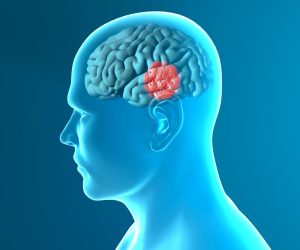Parkinson’s Disease and physical activity
Parkinson’s Disease : definition and symptoms
Parkinson’s disease (PD) has an annual incidence rate ranging from 5 to 346 cases per 100 000 in Europe [1]. PD is a progressive and neurodegenerative type of movement disorder. It is a multisystem disorder affecting nerve cells (among others) in a region of the brain which produces dopamine, an essential substance for the control of motor and cognitive function. PD results in tremor, stiffness, slowness of movements and postural disorders, as well as depression, sleep and cognitive disorders [2]. The main risk factor for PD is age. However, exposure to pesticides, traumatic brain injury and physical inactivity may also be associated with PD [3].
The effects of physical activity on Parkinson’s disease?
Aerobic exercise, such as treadmill training, Nordic walking or dance, improves motor function, postural control and gait [4]. Exercise may protect neuronal cells and mitochondria (i.e. the energy factory of the cells) from degeneration and dysfunction. It may activate factors that are involved in the survival of the current neurons and in the generation of new neurons in some regions of the brain [5]. Obviously, aerobic exercise attenuates the negative effects of PD-induced inactivity on the cardiovascular system. Furthermore, resistance exercise improves force production, muscular endurance and muscle size in individuals with PD [6]. Training which includes two concomitant exercises (e.g. walking and counting) may enhance the performance in both tasks in individuals with PD [7].
What are the risks?
With the evolution of Parkinson’s Disease, the risk of falls increases. In addition, patients in the later stages of the disease may suffer from orthostatic hypotension and general physical impairment. Physical activity should be supervised, and spotters should be used, in order to prevent falls, especially during exercises, which challenge postural control.
Recommendations
Physical activity is strongly recommended throughout the evolution of Parkinson’s Disease, and should be adapted to disease stage. Resistance training increases strength and should be performed as 1-3 sets of 8-12 repetitions for exercises at 70% of maximal weight that can be lifted on 2-3 days per week. For individuals in the later stages of the disease, training frequency can be increased to 4-5 days per week and the number of repetitions can be decreased to 1-6 [8]. Recommendations for aerobic exercise include 2-4 hours per week of mild to moderate intensity activity (40-50% of the heart rate reserve) [9]. Treadmill walking and cycle-ergometer can be used, especially to prevent falls. Like dance (waltz, Argentine tango, etc.) [6], boxing-based exercises involve the use of external cues, the practice of different movement strategies and dynamic postural control [10]. Therefore, these play-based physical activities are also recommended.
Related groups
References
- Von Campenhausen S, Bornschein B, Wick R, et al. Prevalence and incidence of Parkinson’s disease in Europe. Eur Neuropsychopharmacol 2005;15(4):473-90. Available at: http://dx.doi.org/10.1016/j.euroneuro.2005.04.007.
- Medlineplus. Parkinson’s disease. 2014 [cited 2014 22/09/2014]; Available from: http://www.nlm.nih.gov/medlineplus/parkinsonsdisease.html.
- Kieburtz K, Wunderle KB. Parkinson’s disease: evidence for environmental risk factors. Mov Disord 2013;28(1):8-13. Available at: http://dx.doi.org/10.1002/mds.25150.
- Shu HF, Yang T, Yu SX, et al. Aerobic exercise for Parkinson’s disease: a systematic review and meta-analysis of randomized controlled trials. PLoS One 2014;9(7):e100503. Available at: http://dx.doi.org/10.1371/journal.pone.0100503.
- Lau YS, Patki G, Das-Panja K, Le WD, Ahmad SO. Neuroprotective effects and mechanisms of exercise in a chronic mouse model of Parkinson’s disease with moderate neurodegeneration. Eur J Neurosci 2011;33(7):1264-74. Available at: http://dx.doi.org/10.1111/j.1460-9568.2011.07626.x.
- Earhart GM, Falvo MJ. Parkinson disease and exercise. Compr Physiol 2013;3(2):833-48. Available at: http://dx.doi.org/10.1002/cphy.c100047
- Yogev-Seligmann G, Giladi N, Brozgol M, Hausdorff JM. A training program to improve gait while dual tasking in patients with Parkinson’s disease: a pilot study. Arch Phys Med Rehabil 2012;93(1):176-81. Available at: http://dx.doi.org/10.1016/j.apmr.2011.06.005.
- Falvo MJ, Schilling BK, Earhart GM. Parkinson’s disease and resistive exercise: rationale, review, and recommendations. Mov Disord 2008;23(1):1-11. Available at: http://dx.doi.org/10.1002/mds.21690.
- Shulman LM, Katzel LI, Ivey FM, et al. Randomized clinical trial of 3 types of physical exercise for patients with Parkinson disease. JAMA Neurol 2013;70(2):183-90. Available at: http://dx.doi.org/10.1001/jamaneurol.2013.646.
- Combs SA, Diehl MD, Chrzastowski C, et al. Community-based group exercise for persons with Parkinson disease: a randomized controlled trial. NeuroRehabilitation 2013;32(1):117-24. Available at: http://dx.doi.org/10.3233/NRE-130828.
Authors & expert
Authors : Alexis Lion1, Jane S. Thornton2.
Expert : Alexandre Bisdorff3.
1 Luxembourg Institute of Health, Sports Medicine Research Laboratory, L-1460 Luxembourg, Luxembourg
2 Centre Hospitalier Universitaire Vaudois, Policlinique Médicale Universitaire, CH-1011 Lausanne, Switzerland
3 Centre Hospitalier Emile Mayrisch, Service de Neurologie, L-4240 Esch-Sur-Alzette, Luxembourg
Year of publication
2015
